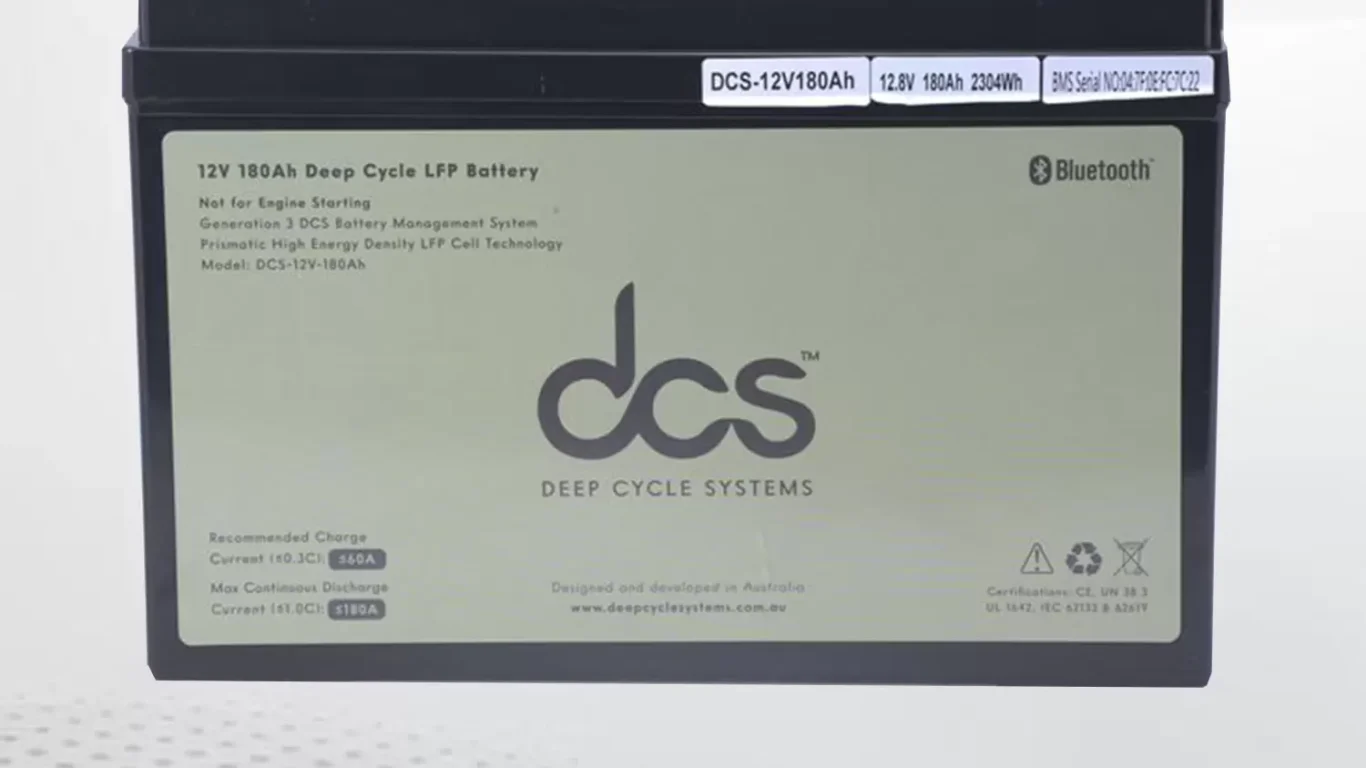Unleashing the Potential of 100Ah Lithium Batteries

The demand for efficient and reliable power sources has never increased as technology advances. One such power source that has recently gained popularity is the 100-ah lithium battery. These batteries are known for their high energy density, longer lifespan, and lightweight design, making them ideal for various applications. This blog post will explore the basics of 100ah lithium batteries, their advantages, applications, maintenance tips, creative uses, environmental impact, and more.
Understanding the Basics of 100-Ah Lithium Batteries
100-ah lithium batteries represent a significant leap forward in energy storage technology. These rechargeable power sources harness the capabilities of lithium ions to store and deliver energy efficiently. The term “100-ah” signifies the battery’s ampere-hour rating, a unit of measurement that conveys the amount of electricity it can supply over a specific period. This rating is integral in understanding the battery’s capacity for energy storage, equating to its ability to deliver 100 amperes of current for one hour.
Distinguished by their superior energy density, 100-ah lithium batteries embody a compact and lightweight solution, eclipsing the bulkier alternatives historically used. This pivotal attribute means they can store more energy in a lesser volume, an essential factor for applications where space and weight are critical considerations. Their enhanced efficiency underscores the transition to 100-ah lithium batteries from conventional lead-acid counterparts, marking a transformative shift in how power is stored and utilised across various domains.
The Advantages Of Using 100-Ah Lithium Batteries
The merits of employing 100-ah lithium batteries are manifold, making them a superior choice for many applications. These batteries are characterised by their exceptional longevity, enduring up to a decade or more under optimal conditions. Such durability enhances their value proposition and translates into considerable cost efficiencies, as the need for replacements is markedly reduced.
Further, 100-ah lithium batteries excel in terms of energy efficiency. This attribute ensures extended operational periods and robust performance, which is vital in applications with a consistent and reliable energy supply.
Additionally, when managed through proper recycling and disposal practices, the environmental footprint of these batteries can be significantly minimised, contributing to a more sustainable energy solution. Their swift charging capabilities underscore their practicality, offering convenience and time savings. With these benefits, 100-ah lithium batteries are a prime choice for users seeking an efficient, durable, and environmentally considerate energy storage option.
Applications That Benefit From a 100ah Lithium Battery
The versatility of a 100ah lithium battery extends across a broad spectrum of applications, each benefiting from its superior energy storage and efficiency.
- In the realm of renewable energy systems, such as solar panels and wind turbines, these batteries are essential for storing excess energy generated during peak conditions. This capability ensures a stable power supply during periods of low sunlight or wind, enhancing the reliability of renewable energy sources.
- Adopting 100-ah lithium batteries in electric vehicles (EVs) in the automotive sector marks a significant milestone. Their high energy density and fast charging capabilities contribute to longer driving ranges and reduced downtime, addressing two of the most pressing concerns in the EV market.
- Similarly, these batteries are revolutionising the marine industry by powering electric boats and yachts, offering a cleaner, quieter alternative to traditional fuel-powered engines. Recreational vehicles (RVs) and caravans also reap the benefits of 100-ah lithium batteries.
- While on the move, they provide a dependable energy source for powering lights, refrigeration, and other essential appliances, ensuring comfort and convenience in off-grid living situations.
- Furthermore, in off-grid power systems, 100-ah lithium batteries are pivotal. They store energy from solar panels or wind turbines, delivering electricity to remote homes and communities.
Comparing 100-Ah Lithium Batteries with Other Battery Types
Compared to traditional battery types such as lead-acid and nickel-cadmium, 100-ah lithium batteries are noticeably superior in their attributes. Lead-acid batteries, although more affordable initially, require more frequent maintenance and have a significantly shorter lifespan. This means they must be replaced regularly, reducing their cost-effectiveness over time. On the other hand, nickel-cadmium batteries have an impressive cycle life but are burdened by a heavier weight and lower energy density than their lithium counterparts.
This makes them less suitable for applications where weight and efficiency are crucial. Additionally, due to the toxic nature of cadmium, the environmental concerns associated with nickel-cadmium batteries further highlight the appeal of lithium-based alternatives. When considering energy density, lifespan, weight, and environmental impact, 100-ah lithium batteries offer an unparalleled combination of performance and sustainability, making them a preferred choice for a wide range of uses.
Maintenance Tips For 100-Ah Lithium Batteries
Ensuring the longevity and optimal performance of your 100-ah lithium batteries requires adherence to certain maintenance practices. Here are some essential tips to keep in mind:
Regularly Monitor Charge Levels
It’s crucial to monitor your battery’s charge level. Avoid allowing the battery to become fully depleted before recharging. Lithium batteries perform best when maintained within a 20% to 80% range of their total capacity. This practice helps prolong their lifespan by preventing stress on the battery cells.
Use a Compatible Charger
Always use a charger specifically designed for lithium-ion batteries. Chargers that are not compatible can overcharge the battery, reducing its lifespan and potentially posing safety risks. Ensure the charger matches the battery’s voltage requirements to facilitate optimal charging conditions.
Store in a Cool, Dry Place
Store your 100-ah lithium battery in a cool and dry environment when not in use. Extreme hot and cold temperatures can adversely affect the battery’s chemistry, leading to reduced efficiency and potential damage. A temperature-controlled setting is ideal for prolonging battery health.
Inspect Regularly for Damage
Make it a routine to visually inspect your battery for any signs of wear, tear, or damage. Look out for bulging, cracking, or leaks – indicators that the battery may need replacing. Early detection of these signs can prevent safety hazards and ensure the battery remains in good working condition.
Unlocking Potential: Creative Uses For 100-Ah Lithium Batteries
Beyond conventional uses, 100-ah lithium batteries are carving a niche in inventive applications that highlight their adaptability. These robust energy sources find a place in powering surveillance systems in remote locations, where traditional power supply is a challenge, offering security solutions that are both reliable and long-lasting. Innovators are also tapping into the potential of these batteries in personal transportation, such as electric skateboards and scooters, providing an eco-friendly alternative for urban mobility.
Furthermore, the arts and entertainment sector benefits from the portable power supplied by 100-ah lithium batteries, enabling lighting and sound equipment to run outdoors without needing a fixed power source. The agricultural industry is another beneficiary, where these batteries are used in automated feeding machines and irrigation systems, promoting efficiency and sustainability in farming practices.
Such diverse applications underscore the versatility of 100-ah lithium batteries and open up avenues for creative problem-solving across various fields, driving forward innovations that contribute to a more sustainable and technologically advanced future.
The Environmental Impact of 100-Ah Lithium Batteries
The environmental footprint of 100-ah lithium batteries deserves careful consideration. The lithium extraction, essential for these batteries, involves processes that can lead to significant ecological disturbances, including water pollution and habitat disruption. The production phase, too, is energy-intensive, contributing to carbon emissions.
However, advancements in recycling technologies are improving the sustainability of 100-ah lithium batteries. Efficient recycling methods can recover a substantial portion of the lithium and other materials for reuse, thereby mitigating some environmental concerns associated with their production and disposal. Consumers and industries must support these recycling initiatives, ensuring batteries are returned to appropriate facilities rather than ending up in landfills.
Engaging in responsible usage and disposal practices significantly reduces the environmental impact of these batteries. Promoting a circular economy approach, where materials are reused and recycled, can minimise the ecological footprint of 100-ah lithium batteries. This involves concerted efforts from manufacturers, consumers, and regulatory bodies to embrace and implement sustainable practices throughout the battery’s lifecycle.
Charging and Discharging a 100 Ah Lithium Battery
Adhering to best practices for charging and discharging is imperative to maximising the performance and lifespan of your 100 ah lithium battery. Utilising a charger specifically designed for lithium batteries is crucial, as this ensures the battery is charged within its optimal parameters, safeguarding against the risks of overcharging. Overcharging a 100-ah lithium battery can lead to diminished capacity and sometimes pose safety risks. Consequently, following the manufacturer’s guidelines concerning the charging process is essential.
Equally important is monitoring the discharging process. Allowing a lithium battery to discharge below its recommended threshold can cause irreversible damage, reducing lifespan and efficiency. Maintaining the charge level within the range recommended by the manufacturer is advisable to avoid complete depletion before recharging.
Incorporating a smart charging system can significantly help manage the charge-discharge cycle. These systems are adept at regulating the charging process, ensuring the battery is neither overcharged nor excessively discharged. They are vital in extending the battery’s service life by maintaining it within its safe operational boundaries.
Conclusion
In closing, exploring 100-ah lithium batteries unveils various possibilities across various sectors, championing advancements in sustainable energy solutions. Their unrivalled blend of efficiency, longevity, and environmental mindfulness sets a benchmark for future developments. As we navigate through an era where the demand for cleaner, more reliable energy sources is paramount, the role of these batteries becomes increasingly significant. Embracing and optimising 100-ah lithium batteries is an investment in superior technology and a stride towards a more sustainable and energy-efficient future.
FAQs
How long does a 100-Ah lithium battery last?
The lifespan of a 100-Ah lithium battery depends on its usage, charging cycles, and environmental conditions. Typically, these batteries can last between 2,000 to 5,000 charge cycles, translating to several years of usage. Proper maintenance and avoiding extreme temperatures can help maximise their longevity.
What are the advantages of using a 100Ah lithium battery over traditional lead-acid batteries?
A 100Ah lithium battery offers several advantages over traditional lead-acid batteries, including a longer lifespan, lighter weight, faster charging times, and higher energy efficiency. Lithium batteries have a higher depth of discharge, meaning more of the battery’s capacity can be used without damaging it.
Can a 100-Ah lithium battery be used in a solar power system?
Yes, a 100-Ah lithium battery is well-suited for solar power systems. Its high efficiency, long cycle life, and ability to handle deep discharges make it ideal for storing solar energy and providing reliable power when sunlight is unavailable.
What are the safety considerations when using a 100-Ah lithium battery?
When using a 100-Ah lithium battery, following safety guidelines to prevent accidents is essential. This includes using a compatible charger, avoiding overcharging or deep discharging, keeping the battery away from extreme temperatures, and ensuring proper ventilation.
How do you properly maintain a 100-Ah lithium battery?
Proper maintenance of a 100-Ah lithium battery involves regularly monitoring its charge level, avoiding complete discharge, and using a charger designed for lithium batteries. Storing the battery in a cool, dry place and periodically checking for any signs of damage or wear can also help extend its lifespan and ensure reliable performance.
| Related Business Listings |
| Contact Directory |
| Local Business Profiles |




